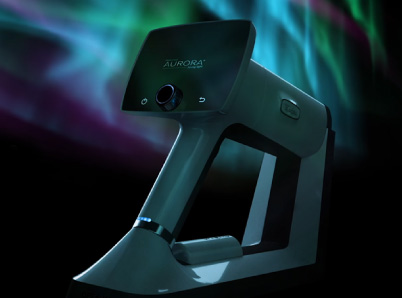The prevention of blindness from progressive eye diseases such as diabetic retinopathy, glaucoma, and age-related macular degeneration remains a significant and growing problem for healthcare providers worldwide. One of the main reasons relates to care gaps in providing proper retina screenings to those who need it the most.
These care gaps have emerged for many reasons but are primarily due to limitations in diagnostic technology and processes that tend to leave retinal screenings to the domain of eye care specialists. As a result, not enough patients have access to the early diagnosis capabilities that they need to help them sustain their sight.
New retina screening devices for primary care are now opening the potential for change by making it easier for primary care and ER doctors to offer early detection of devastating eye disease. As these technologies expand, more providers will be able to play a role in saving the eyesight of patients in their care.
The Devastating Impact of Diabetic Retinopathy
Perhaps the greatest threat to eyesight comes from diabetic retinopathy, one of the main complications faced by diabetic patients. Diabetes has long been a major health concern, but the disease is poised to grow exponentially worldwide over the next two decades, from 425 million in 2017 to 629 million in 2045.
Research indicates that a third or more of patients with diabetes will develop diabetic retinopathy, in which high blood sugar damages the blood vessels that feed the retina. As a result, cases of blindness and other visual impairments may also soar. But these conditions are treatable if recognized early.
Diabetic retinopathy develops slowly and almost imperceptibly. Often, by the time that it is recognized, it is too late to prevent some form of vision impairment or worse. Diabetic retinopathy is the leading cause of blindness for adults of working age.
Of particular alarm is the fact that diabetes itself often goes undiagnosed, making it even more challenging to identify patients at risk and get them the care that they need.
The advent of retina screening devices for primary care offers hope, providing the healthcare system with effective new tools that could make early screenings more widely and readily available to a significantly larger group of patients.
Why Early Detection Matters
Research shows the effectiveness of early intervention in preventing the worst outcomes from diabetic retinopathy. The evidence strongly suggests that early detection is the key to addressing the retinopathy crisis. The sooner that problems are detected, the more options doctors have for interventions that can save sight.
But early detection currently lags due to limitations in the current form of diagnostic technology. Many consider the direct ophthalmoscope, which doctors have used for years to look for signs of microvascular/circulatory problems, to be mismatched to the pace and volume of today’s primary care practices. They cite several drawbacks, including:
- Patients must have their pupils dilated for the most accurate diagnosis. Dilating drops often take thirty minutes or more to work, which interrupts the flow of patients through a primary care practice.
- The field of view is limited, requiring the doctor to invest extra time in viewing the entire retina properly.
Because of the challenges in utilizing the direct ophthalmoscope, primary care physicians only play a small role in early detection. They instead respond by referring patients to eye care specialists, and compliance with such recommendations is statistically very low. The situation is complicated by the fact that diabetes is more widespread than the data indicates.
Closing the Gap with Retina Screening Devices for Primary Care
Early detection can take on many forms. Some countries have decided to make early eye screenings a national health care priority, to raise awareness and make resources available. Initiatives in Ireland, for example, have proven successful in addressing the problem through education and early intervention.
The scope of the problem calls out for a technological solution—and it’s one that the scientists at Optomed have been perfecting for the past decade.
Optomed has developed successive iterations of a digital retinal camera system known as Aurora that makes it easier for doctors to view the fundus to find signs of diabetic retinopathy.
The camera fits into the primary workflows, making early eye disease detection a routine part of regular checkups. The Aurora is non-mydriatic, meaning that screenings can take place without pupil dilation. The camera also offers a wider field of view to show a larger portion of the pupil at one time, making for faster exams.
In addition, the possible integration of artificial intelligence in digital retinal cameras such as the Aurora provides decision support in the evaluation of eye scans. AI tools can quickly identify the most problematic scans as a way of directing resources to those who need help most urgently. The Aurora also provides efficiencies through connectivity: still or video eye scans can be added easily to electronic health records or shared with specialists working remotely.
Saving Sight
It is tragic for anyone to lose their sight unnecessarily, especially given that an estimated 80% of cases of blindness from eye diseases are both treatable and preventable if discovered early enough.
Optomed as an organization is focused on innovative solutions that make early detection capabilities more widely available. By working together with both primary and emergency care providers, we can save the sight of millions.
Here at Optomed, our mission is to help save the vision of millions of people. By integrating our software and artificial intelligence solutions with our camera, we enable eye screening for everyone, wherever they are. To see how we can equip you to save the sight of more patients, schedule a free consultation today!
